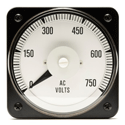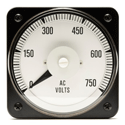Pointing toward stability
In a cartoon version of a measurement, you might think of an old style voltmeter with a mechanical pointer settling down on a number. In somewhat the same vein, Wojciech Zurek coined the term “pointer states” in the 1980s to describe the quantum basis states that stably arise when a quantum system interacts with its classical environment during a measurement. Such states are interesting because they retain high fidelity (a figure of merit for how well information is preserved) and can last for a long time, both features of interest in quantum information processing. Writing in Physical Review A, Kaveh Khodjasteh at Dartmouth College, New Hampshire, and his colleagues describe their theoretical proposal for how to convert any pure quantum state into pointer states.
The problem of creating pointer states is somewhat similar to a process known as dynamic decoupling in quantum computation, where a control protocol is applied to the system, either in a series of pulses or a continuous modulation of some parameter, which removes interactions with the environment to prevent decoherence. In their twist on this theme, Khodjasteh et al. design explicit control recipes that permit transformation of the Hamiltonian of a system with initial pure states into an effective Hamiltonian with stable pointer states that are robust in the presence of environmental interaction. The researchers then tested the control sequences with numerical simulations of realistic one- and two-qubit systems. Creation of such pointer states may enable new kinds of classical memory storage as well as potential resources for quantum information processing. – David Voss





